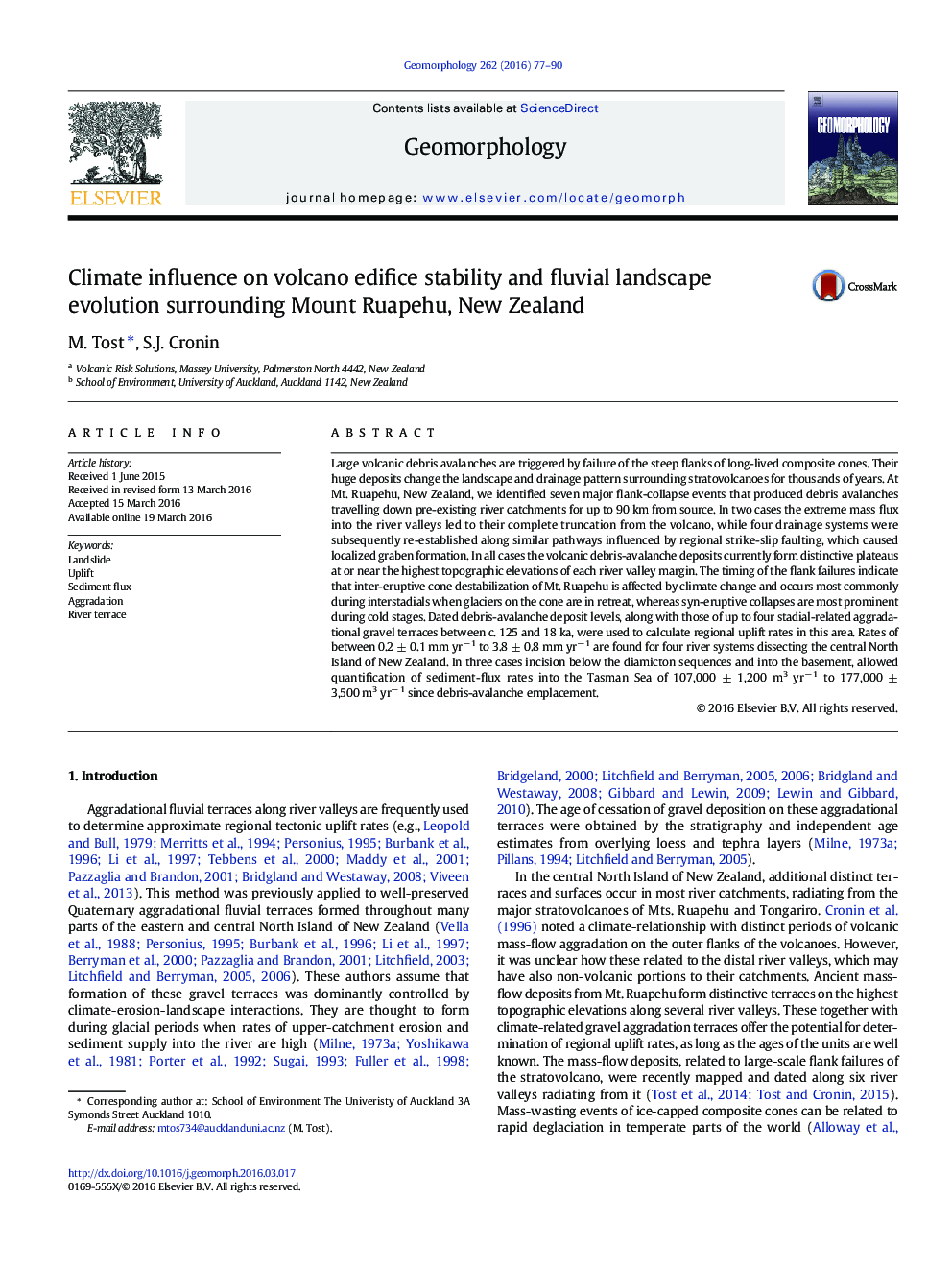| کد مقاله | کد نشریه | سال انتشار | مقاله انگلیسی | نسخه تمام متن |
|---|---|---|---|---|
| 4683994 | 1635387 | 2016 | 14 صفحه PDF | دانلود رایگان |
Large volcanic debris avalanches are triggered by failure of the steep flanks of long-lived composite cones. Their huge deposits change the landscape and drainage pattern surrounding stratovolcanoes for thousands of years. At Mt. Ruapehu, New Zealand, we identified seven major flank-collapse events that produced debris avalanches travelling down pre-existing river catchments for up to 90 km from source. In two cases the extreme mass flux into the river valleys led to their complete truncation from the volcano, while four drainage systems were subsequently re-established along similar pathways influenced by regional strike-slip faulting, which caused localized graben formation. In all cases the volcanic debris-avalanche deposits currently form distinctive plateaus at or near the highest topographic elevations of each river valley margin. The timing of the flank failures indicate that inter-eruptive cone destabilization of Mt. Ruapehu is affected by climate change and occurs most commonly during interstadials when glaciers on the cone are in retreat, whereas syn-eruptive collapses are most prominent during cold stages. Dated debris-avalanche deposit levels, along with those of up to four stadial-related aggradational gravel terraces between c. 125 and 18 ka, were used to calculate regional uplift rates in this area. Rates of between 0.2 ± 0.1 mm yr− 1 to 3.8 ± 0.8 mm yr− 1 are found for four river systems dissecting the central North Island of New Zealand. In three cases incision below the diamicton sequences and into the basement, allowed quantification of sediment-flux rates into the Tasman Sea of 107,000 ± 1,200 m3 yr− 1 to 177,000 ± 3,500 m3 yr− 1 since debris-avalanche emplacement.
Journal: Geomorphology - Volume 262, 1 June 2016, Pages 77–90
